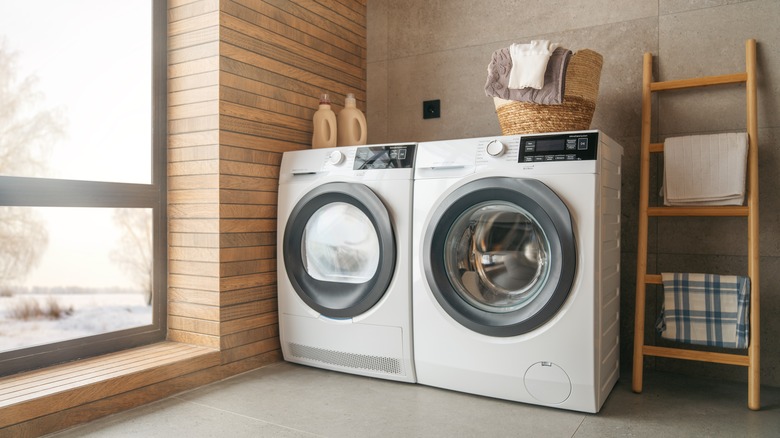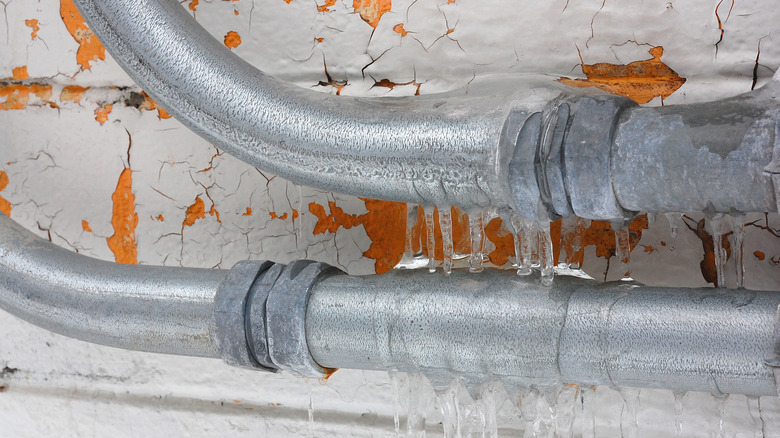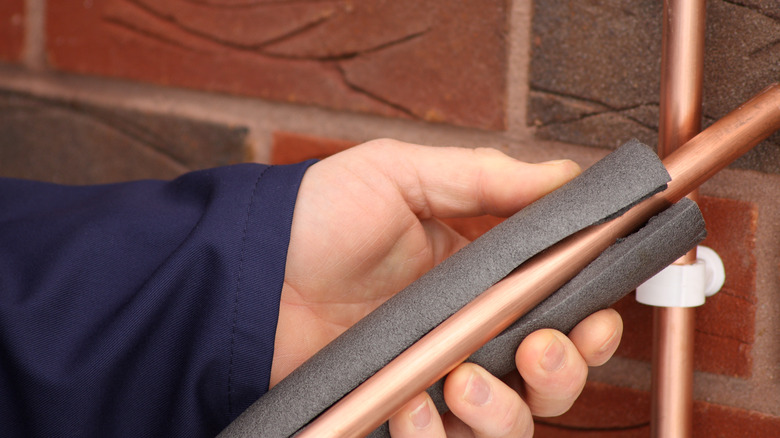Vacation House Rules' Scott McGillivray Avoids This Laundry Room Mistake At All Costs
"Vacation House Rules" might be focused on contractor Scott McGillivray's transformations of properties fit for summer fun, but one of his tips is all about protecting your space during the chillier months of the year. It's common not to want to waste precious living space by constructing a laundry room, so some homeowners choose to section off an area away from the main part of the house during a renovation and, subsequently, away from the warm air from the heater. This isn't an issue during the more temperate part of the year, but McGillivray says you can run into some unwelcome damage once temperatures drop in the winter.
"Don't put your machines into sunrooms or additions that aren't heated," he wrote on his website. "Unless a heat source is added when the washer is installed you can run the risk of frozen pipes and all the damage that can come with them."
Why this can cause issues
Frozen pipes can be a major issue once temperatures start to drop, especially in colder climates, but when you're building or renovating your home during the warmer months, it's likely not the first thing on your mind. One of the easiest ways to keep your indoor pipes from freezing is by maintaining an internal temperature of at least 55 degrees. Typically, this isn't much of an issue as most homeowners like to avoid stepping from chilly weather into an equally-arctic tundra indoors, but in areas of the home that don't have direct access to the heater or are more exposed to the elements, like a sunroom, the air can get pretty chilly.
Because of this, Scott McGillivray's advice to install your washing machine somewhere that can remain heated is a solid tip. Water expands when frozen, and this added pressure can cause pipes to burst or split, leading to water damage and necessary repairs that can cost anywhere from a couple hundred to several thousand dollars. If you live in an area that frequently freezes, it's best to do what you can to prevent this issue before it happens.
How to prevent frozen pipes if you have this issue
If your washing machine is installed in an unheated room, you have two options for preventing future pipe bursts. The first is to install additional heating elements to increase the room's temperature during colder times of the year. To help reduce your energy costs at home, this should also be done in conjunction with plenty of insulation to prevent your heater from having to work overtime. Check that your ceiling and walls are properly insulated, and make sure the weatherproofing on doors and windows is creating a solid seal.
The second approach is a lower-cost option, but it can still significantly reduce your risk of a frozen pipe. If your washer is already installed and you can't move it or install more heating, do your best to insulate your water supply just like you would in your outdoor spaces. Pipe wrap is fairly inexpensive, especially if you're only working with a small length, so this presents a great solution if you're working with a limited budget.


